
El Niño and Warm Anomalies Restructure the Ecosystem
El Niño and Warm Anomalies Restructure the Ecosystem

Pleuronocodes planipes, the pelagic red crab, which increases markedly in abundance in the CCE region during most El Niños.
Credit: M. Stukel
California Current Ecosystem LTER researchers published a cluster of 5 papers in Deep-Sea Research (vol. 140, Oct. 2018) that analyzed biotic responses to two successive perturbations of the California Current pelagic ecosystem: the Warm Anomaly of 2014-15 followed by El Niño of 2015-16. These studies drew on 12 years of LTER process studies and an analysis of 66-year records from CalCOFI to develop a quantitative basis for forecasting future responses of biotic processes including primary production, zooplankton community composition, and carbon export.
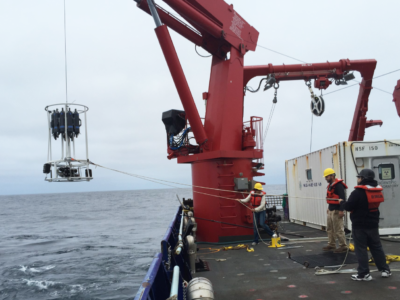
Iron Supply Broadly Influences Carbon Dynamics
Iron Supply Broadly Influences Carbon Dynamics
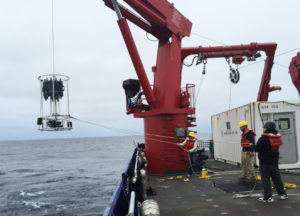
Sampling with a Trace Metal-clean rosette.
Credit: K. Barbeau lab
Iron supply in the CCE LTER region not only impacts carbon production and export associated with mesoscale circulation features. It also influences phytoplankton growth and species composition at the subsurface chlorophyll maximum layer (SCML), which is a widespread feature during spring and summer. Consistent with regional climate indices, biogeochemical proxies for iron limitation revealed increasing frequency of iron limitation at SCMLs in the California Current system. These results are relevant to upwelling systems worldwide.
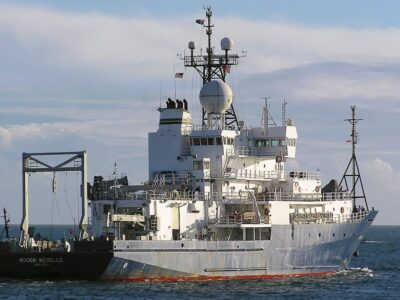
Episodic Events Alter Primary Production and Carbon Export
Episodic Events Alter Primary Production and Carbon Export
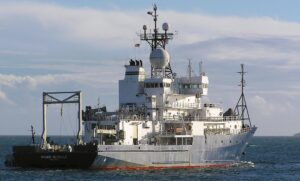
R/V Roger Revelle at sea, one of the research vessels CCE uses to investigate primary production, carbon export,
and plankton food web structure.
Credit: SIO Ship Operations
Process studies and related time series measurements reveal the under-appreciated importance of episodic events in the oceanic carbon budget. Spatial and temporal perturbations to the carbon cycle can be associated with (sub)mesoscale features (fronts, eddies, and filaments), which CCE LTER researchers have shown tend to be sites with enhanced phytoplankton and zooplankton biomass and production, and vertical carbon flux.
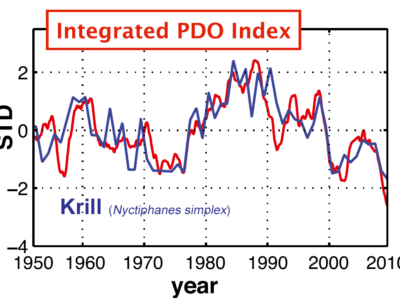
Double Integration of Climate Forcing
Double Integration of Climate Forcing
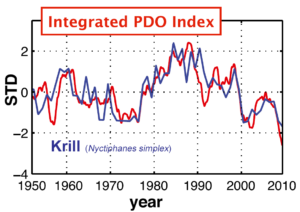
The Integrated Pacific Decadal Oscillation index (PDO, red) nicely predicts the variation in an important species of krill (Nyctiphanes simplex, blue) in the CCE site.
Credit: Di Lorenzo & Ohman, 2013
More than 60 years of zooplankton census data revealed that some populations respond indirectly to climate changes in two stages: first, ocean circulation responds to wind, then the zooplankton population level responds to ocean circulation. This broadly applicable principle of ‘double integration’ implies that direct correlations with climate variables should be replaced by metrics that reflect the biological time scale (e.g., life span) of the organisms concerned.
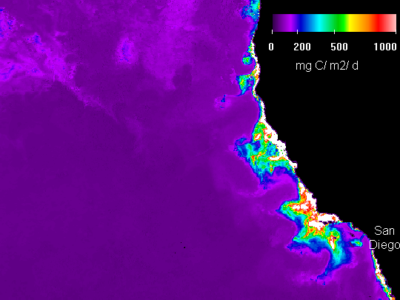
Optimized Satellite Remote Sensing Products
Optimized Satellite Remote Sensing Products
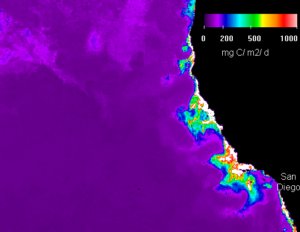
Satellite-estimated Carbon Export Flux (mg C m-2 d-1) from the new CCE-LTER MERGED product.
Credit: M. Kahru
Several years of effort have led to an important California Current merged satellite-derived 4 km dataset becoming openly available online. The website provides access to regionally optimized remote sensing products and rigorously integrated time series for chlorophyll-a, net primary production, and export flux of carbon from 1996 to 2019.
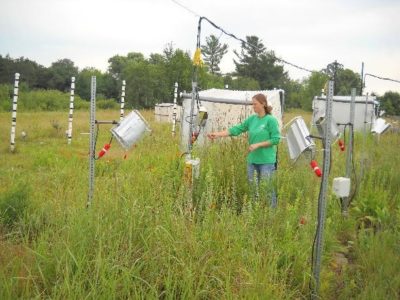
Soil Resources Limit Grassland Ecosystems’ Response to Elevated CO2
Soil Resources Limit Grassland Ecosystems’ Response to Elevated CO2
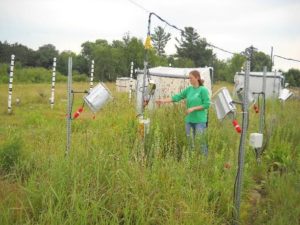
CDR Experiment E141 – BioCON (Biodiversity, CO2, and N) / TeRaCON (Temperature, Rainfall, CO2, and N) experiments.
Credit: Susan Barrott
In two nested global change experiments, nitrogen (N) and soil moisture jointly constrained the response of biomass production to elevated CO2 over the long term. When both water and N were limited, elevated CO2 did not affect plant biomass. When neither resource was limited, elevated CO2 caused an increase in plant biomass.
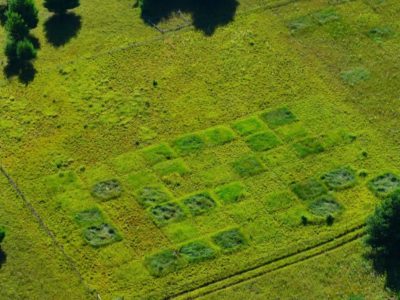
Chronic N Enrichment Alters Plant Biodiversity and Community Composition
Chronic N Enrichment Alters Plant Biodiversity and Community Composition
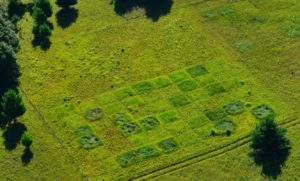
CDR Experiment E002 – Long-Term Nitrogen Addition to Disturbed Vegetation.
Credit: Jacob Miller
Chronic N addition reduced plant species richness and led to the local extinction of species with efficient N use. Species richness returned to its original level after ceasing the addition of low levels of N. These changes in composition were readily reversed after low levels of N were no longer added. However, species richness did not recover two decades after ceasing the addition of high levels of N. Network-wide synthesis projects are testing how applicable this observation may be across different ecosystem types.
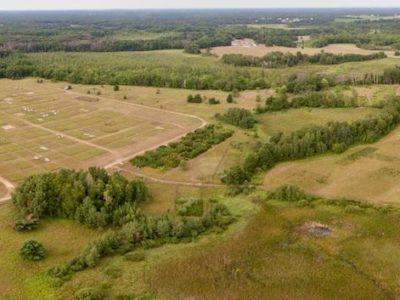
Biodiversity Increases Ecosystem Productivity and Stability
Biodiversity Increases Ecosystem Productivity and Stability
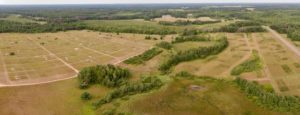
Left =1994 Big Biodiversity herbaceous community plots. Rectangular grid adjacent to lower right corner of Big Bio = 2012 forest biodiversity experiment (FAB l) high density forest plots. Far right gridded section = 2015 forest biodiversity experiment (FAB ll) low density plots.
Credit: Forest Isbell
Research in the 1990s demonstrated that more diverse herbaceous plant communities are more productive and exhibit less year-to-year variability in net primary productivity (NPP). Recently, this positive relationship has also been observed in forest communities. New CDR LTER research also indicates that the relationship increases in strength with experiment duration in grasslands. Recent network-wide synthesis projects are scaling results up from biodiversity experiments to natural communities and testing predictions.
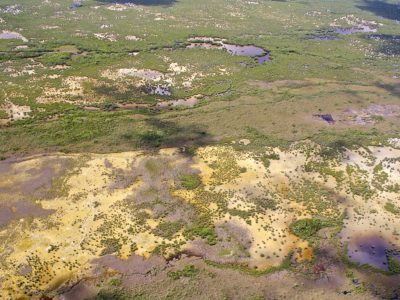
Hidden Origins of Coastal Productivity
Hidden Origins of Coastal Productivity
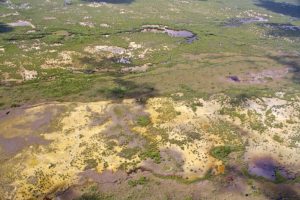
Ecotone interface between mangrove and sawgrass in lower Shark River Slough
Credit: Stephan Davis
Contradicting classical estuary models, FCE LTER research demonstrated that marine nutrient supplies (rather than freshwater nutrient supplies) control coastal productivity gradients via daily tides, episodic storm surges, and hidden groundwater upwelling. Saltwater intrusion amplifies marine pulses by increasing connectivity to the sea and liberating phosphorus from limestone. Sea level projections based on long term data were refined, painting a better picture of how water quality will be affected by shifts in freshwater supply management.
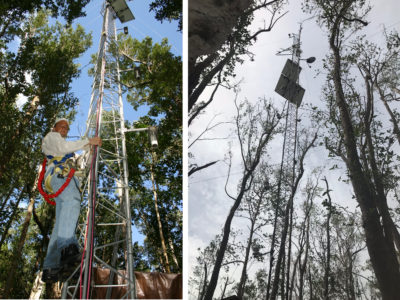
Disturbance Interactions Define Coastal Gradients
Disturbance Interactions Define Coastal Gradients
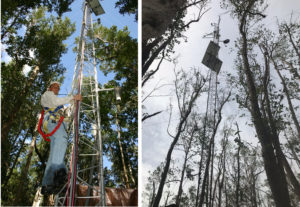
Eddy covariance tower at SRS-6 in lower Shark River before (left) and after (right) Hurricane Irma.
Credit: (left) Jordan Barr (right) Edward Castaneda
Long term data reveal that multiple types of disturbances — including cold snaps, fires, droughts, floods, and tides — play a strong role in shaping coastal ecosystems. Tropical storms can be beneficial by connecting upstream and downstream food webs and dispersing mangrove propagules into disturbance-generated canopy gaps. They also deliver phosphorus rich mineral deposits that promote mangrove transgression, increased soil elevation relative to sea level, and more rapid mangrove wetland recovery.
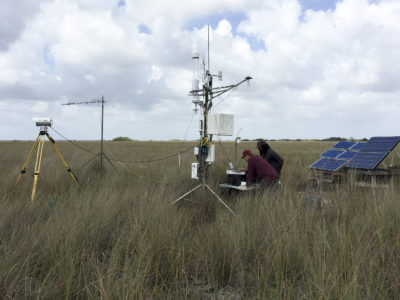
Sea Level Rise May Decouple Carbon Sources / Sinks
Sea Level Rise May Decouple Carbon Sources / Sinks
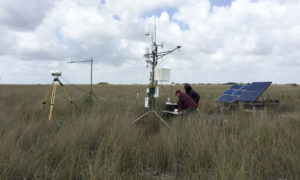
Dr. Greg Starr and Dr. Justin Cummings working on the eddy covariance and meteorological tower near TS/Ph-1b in Taylor Slough.
Credit: Edward Linden
Rising seas can stimulate the inland transgression of mangroves and amplify carbon gains (as observed in historic carbon budgets based on long term flux data, paleoecology, and remote sensing). However, FCE LTER studies, experiments, and models show that carbon losses can exceed increases where saltwater invades freshwater marshes, resulting in abrupt elevation loss (collapse) that further promotes saltwater intrusion.
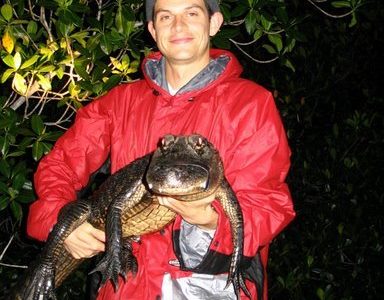
Donor Controlled Food Webs
Donor Controlled Food Webs
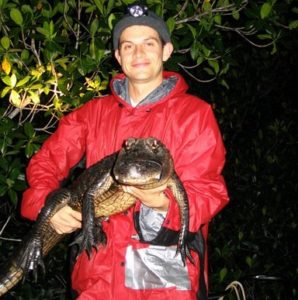
Adam Rosenblatt (Ph.D. student) holding one of his study subjects, an American alligator, in the Shark River estuary.
Credit: Rand Rosenblatt
Coastal food webs are subsidized by episodic and seasonal connections to upstream detrital food supplies. However, top coastal estuary predators show great individual variation in their ability to capitalize on this subsidy — a finding that has been applied in comparative cross-site research.

Estuaries Play an Outsized Role in the Global Carbon Budget
Estuaries Play an Outsized Role in the Global Carbon Budget
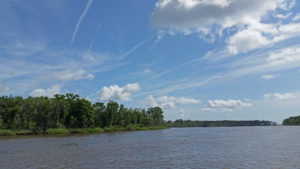
Although estuaries are small in area, they play an outsized role in the global carbon budget.
Credit: Steven Pennings
Estuaries are net sources of CO2 to the atmosphere and coastal ocean, and net sinks for oceanic and atmospheric O2. This finding challenges the simplistic treatment of estuaries in global carbon models, and suggests that interactions between river discharge, changes in marsh area, and increasing atmospheric CO2 will alter shelf-ocean carbon exchange in the future.
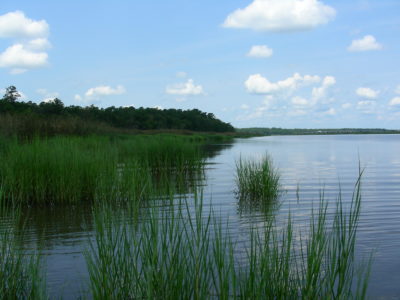
Ammonia Oxidizers Transform the Nitrogen Cycle
Ammonia Oxidizers Transform the Nitrogen Cycle
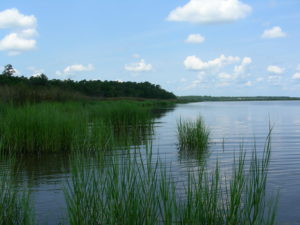
Ammonia oxidizing archaea peak in the summer and play a previously-unknown role in driving estuarine nitrogen cycling.
Credit: Kazimierz Wieski
Ammonia-oxidizing archaea (AOA) convert ammonium into nitrite, but little is known about the population dynamics of this relatively new addition to the nitrogen cycle. Research from GCE LTER found that mid summer blooms of AOA coincide with a peak in nitrite concentration. Field data from 29 estuaries showed similar summer peaks in nitrite, suggesting that summer blooms of AOA are widespread and play a previously unrecognized role in driving estuarine nitrogen cycling.
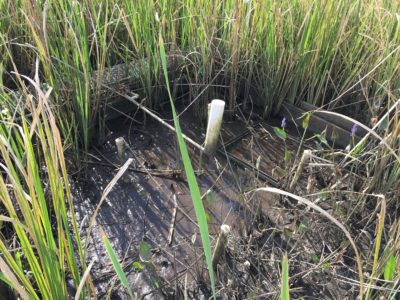
Sea Level Rise Alters Wetland Function
Sea Level Rise Alters Wetland Function
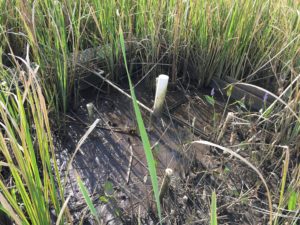
A long-term experiment at the GCE LTER revealed that rising sea levels would negatively affect tidal freshwater marshes.
Credit: Steven Pennings
Sea level rise is expected to cause salt marshes to extend upstream at the expense of freshwater wetlands, dramatically altering the intertidal landscape. Experimental salinization reduces primary production, reduces plant species diversity, decreases respiration, and leads to loss of marsh elevation.
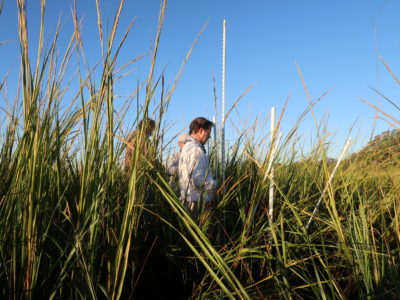
River Flow Supports Marsh Production
River Flow Supports Marsh Production
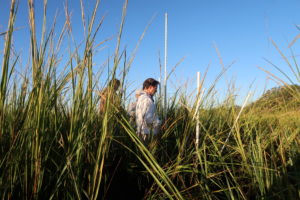
Long-term monitoring of salt marsh plant production revealed the role of river flow.
Credit: Andy Penninman
Long term monitoring, remote sensing, and field experiments showed that dominant estuarine plants grow up to 3 times better in years with low salinities, and that salinity is driven most strongly by river discharge. A high frequency of drought in 1998-2012 led to declines in plant biomass relative to the 28-year period of record for Landsat 8.
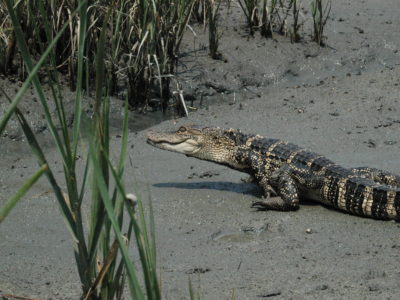
Mobile Predators Structure Communities
Mobile Predators Structure Communities
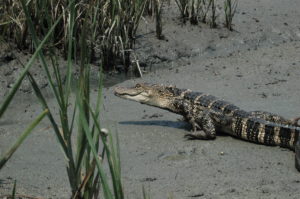
Alligators are one of several mobile apex predators in southeastern estuaries.
Credit: James Nifong
Mobile predators like alligators move between fresh and marine habitats, consume a variety of estuarine prey, and alter the behavior of intermediate predators such as blue crabs. A predator exclusion experiment initiated in 2016 indicated that blue crabs and large fish alter the abundance of marsh invertebrates such as snails and fiddler crabs, which in turn mediate plant production and soil biogeochemistry.
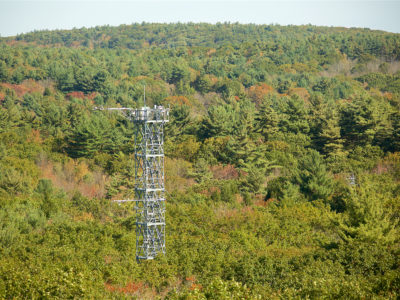
Carbon Uptake Exceeds Expectations
Carbon Uptake Exceeds Expectations
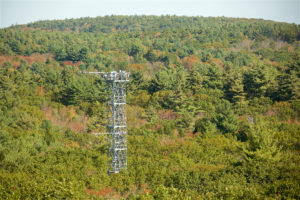
Photo shows the NEON and EMS towers as viewed from the Harvard Forest walk-up tower.
Credit: David R. Foster- Harvard Forest Archives
Contradictory to theoretical models, forest carbon uptake has accelerated over recent decades in maturing forests, a legacy of 19th century land use, and to a lesser degree, modern increases in atmospheric CO2, nitrogen deposition, temperature, and precipitation. This and many other insights into forest ecosystem function have resulted from sustained measurements of biosphere-atmosphere exchanges at HFR’s Environmental Monitoring Site (EMS) eddy flux tower, which provides the world’s longest record of CO2 fluxes in a forest ecosystem. It is also the founding prototype for the AmeriFlux network and National Ecological Observation Network (NEON).
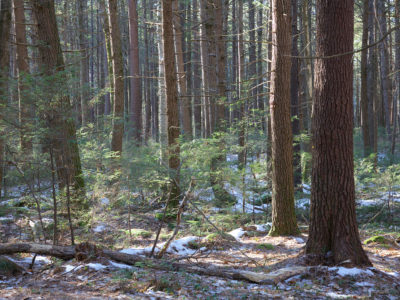
Hemlock is a Foundation Species
Hemlock is a Foundation Species
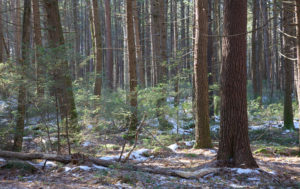
The hemlock forest, as seen from the Woods Road to the tower.
Credit: David R. Foster- Harvard Forest Archives
Three decades of research on abrupt declines in pre-European hemlock populations, long term regional measurements of hemlock decline from the invasive insect hemlock woolly adelgid, and the long term Hemlock Removal Experiment confirm that hemlocks are a foundation species. They control forest structure, composition, and microclimate, with cascading trophic effects extending from mammals to microbes. As invasive insects proliferate across North America, HFR LTER is developing a generalizable understanding of population, community, and ecosystem level responses.
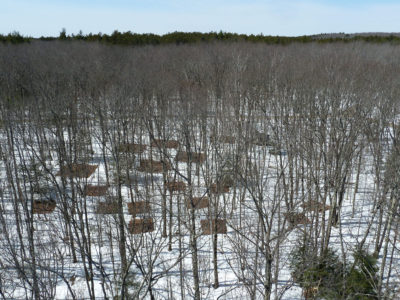
Microbes Respond to Global Change
Microbes Respond to Global Change

The soil warming plots at Harvard Forest viewed from atop an adjacent research tower.
Credit: Audrey Barker Plotkin- Harvard Forest Archives
Decades of experimental soil warming and nitrogen enrichment have induced adaptive responses in microbial communities, abruptly shifting soil carbon dynamics. The experiments have revealed phased responses to warming, oscillating between multi year periods of significant soil carbon loss and phases of no carbon loss.
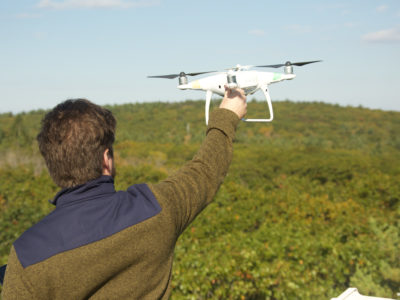
Spring is Arriving Earlier
Spring is Arriving Earlier
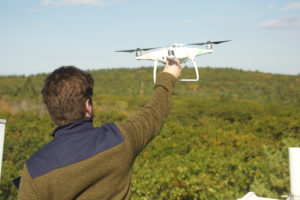
Postdoctoral fellow David Basler releases his drone from the top of Harvard Forest’s walk-up tower.
Credit: David R. Foster- Harvard Forest Archives
Over the last 30 years, spring phenology has advanced across eastern North America, increasing photosynthesis and net ecosystem carbon storage, with a small negative feedback to climate change. Beginning in 1990 as a biannual pen-and-paper record of bud break and leaf fall, HFR LTER launched the PhenoCam Network in 2008, a continental scale observatory of digital imagery tracking phenology at fine spatial and temporal scales.
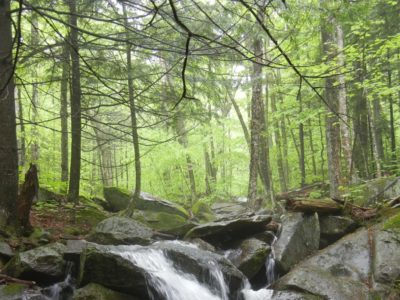
Unexpected Patterns of Streamwater Nitrogen Loss From Watersheds
Unexpected Patterns of Streamwater Nitrogen Loss From Watersheds
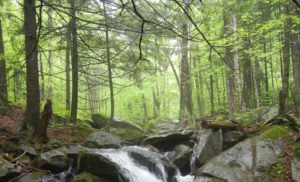
The streams at Hubbard Brook are closely interconnected with the forests around them. Ecological theory led us to expect that in the period that we have been measuring the stream chemistry (1963-present), stream nitrate concentrations should have increased because of the continuing deposition of air pollutant nitrogen on the ecosystem, and because the forests have matured and are no longer accumulating nitrogen. In contrast to those expectations, stream nitrate concentrations have declined in the last several decades, leading us to delve deeper into the nitrogen cycle of the forest to explain this surprising finding.
Credit: Clare Nemes
A mismatch between theory and data has led HBR LTER researchers to re-examine the role of denitrification, the role of mineral soil in nitrogen dynamics during succession, and the role of climate change in “tightening” the nitrogen cycle.
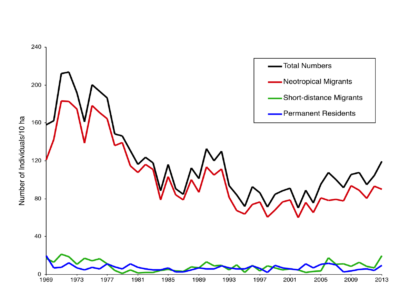
Previously Declining Songbird Populations Show Signs of Stabilizing
Previously Declining Songbird Populations Show Signs of Stabilizing
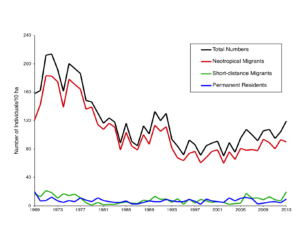
Hubbard Brook researchers have been studying bird populations for over 50 years. This graph shows the number of birds breeding on a 10-hectare forest plot from 1969-2013. Neotropical migrants show a marked decline early in the record, followed by a stabilization of population more recently. Populations of hort-distance migrants and permanent residents have been stable throughout this period.
Credit: Holmes, R.T. and Likens, G.E. 2016
Songbird declines are primarily due to the loss of neotropical migrant species, particularly species that nest and forage in mid-successional habitats. These species have become less common as the forest has matured.
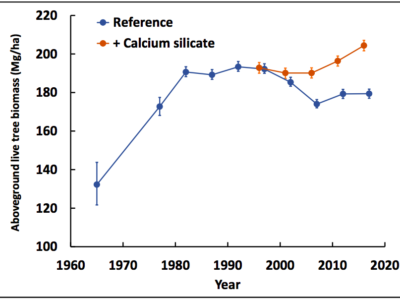
Calcium is Critical to Forests Exposed to Acid Rain
Calcium is Critical to Forests Exposed to Acid Rain
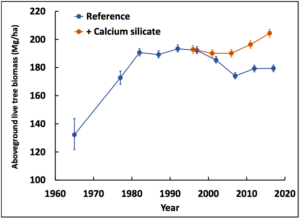
Ecosystems at Hubbard Brook have been subject to acid deposition for over 50 years, leading to the depletion of important nutrients, such as calcium, from the soils. We experimentally replaced the depleted calcium on an entire watershed by spreading a calcium-containing mineral from a helicopter. There was an almost immediate response by the vegetation, particularly sugar maple trees. The increased growth of sugar maple reversed the forest stagnation and decline that had been occurring previously and which continued to occur in a nearby reference watershed.
Credit: Battles, J. J., T. J. Fahey, C. T. Driscoll, J. D. Blum, and C. E. Johnson. 2014
De-acidification of an entire watershed through calcium silicate application led to improved tree growth, health, and reproduction; increased decomposition and loss of soil organic matter; decreased root growth; and increased loss of nitrogen in stream water starting ~10 years after application. Lack of calcium may be inhibiting the regeneration of sugar maple in harvested watersheds.
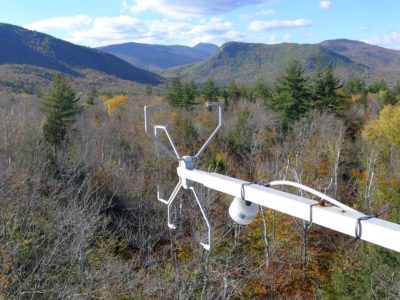
Climate Change Affects Forest Productivity
Climate Change Affects Forest Productivity
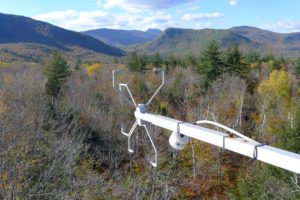
View of the greening-up canopy of the Bartlett Experimental Forest, a sister site to Hubbard Brook, from the top of a tower where carbon dioxide exchange in measured by the eddy covariance technique. The instrument in the foreground is a sonic anemometer. These measurements of the exchange of carbon dioxide between the forest and the atmosphere provide a direct measurement of forest productivity. Year-to-year variation in how much carbon dioxide the forest removes from the atmosphere is strongly related to the timing of the start and end of the growing season, with early spring leaf-out and delayed autumn senescence both tending to increase carbon uptake.
Credit: Andrew Richardson
Climate change has extended the growing season and altered conditions during seasonal transitions. It has also had significant effects on the fluxes of whole-system carbon and nitrogen.










